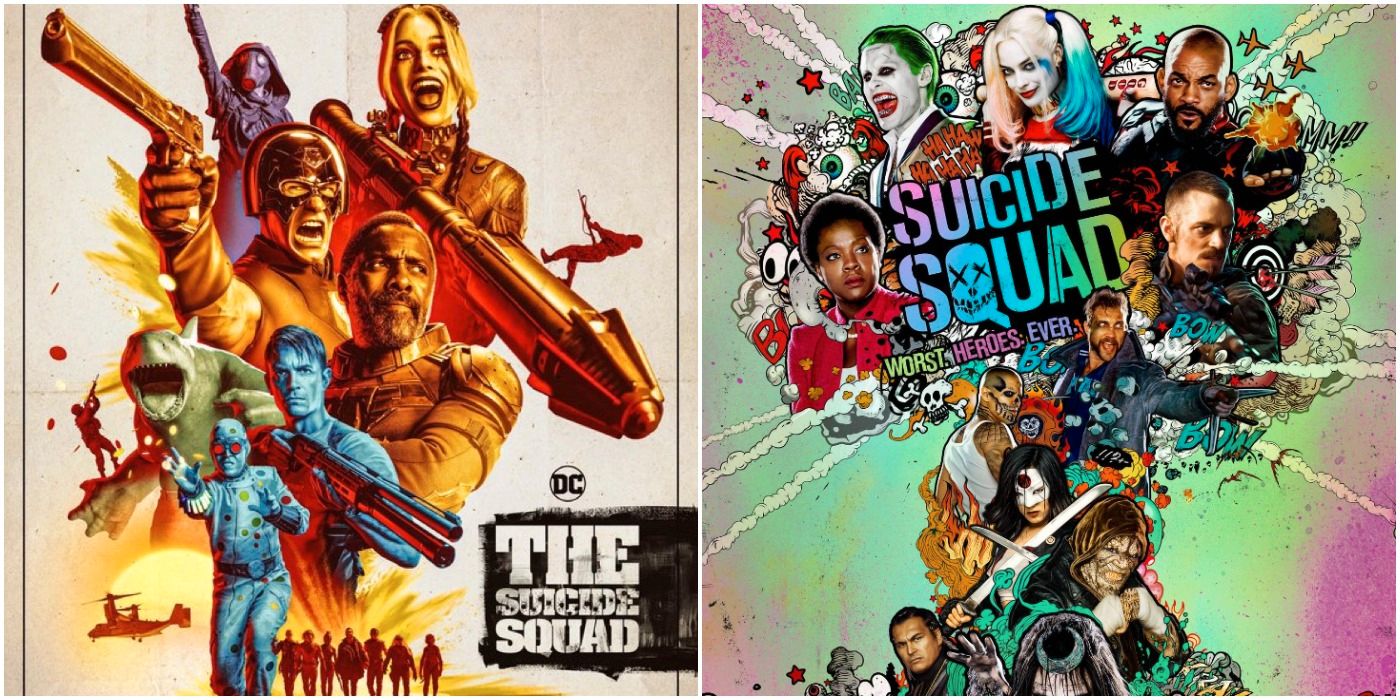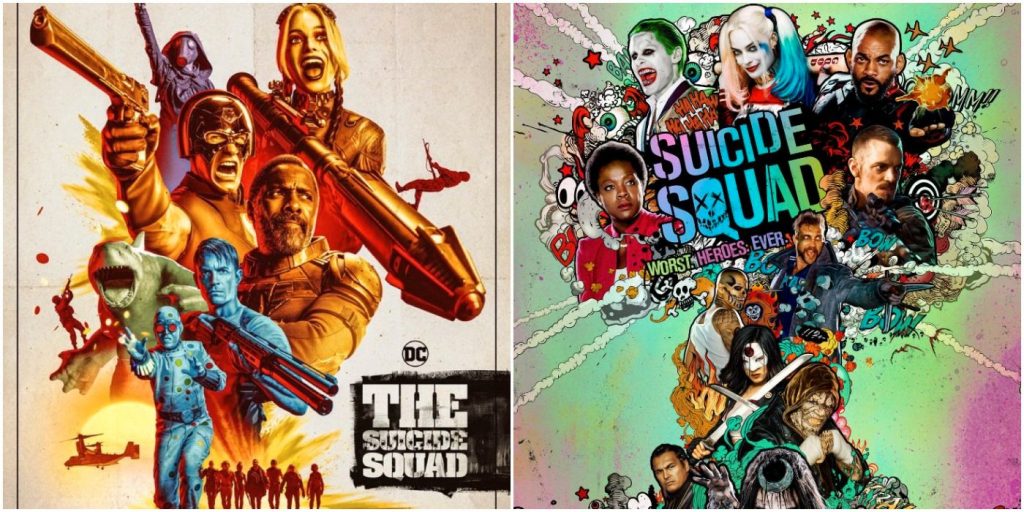
By all accounts, people should be tired of superheroes at this point. They should be especially sick of ensembles after teams like the X-Men, the Avengers, and the Justice League have competed at the box office for years. Lo and behold, The Suicide Squad released last weekend to rave reception, with many hailing it as a hilarious and subversive adventure basking in the wonderful weirdness of its premise. It's not the first time that premise has come to the big screen, though.
RELATED: Most Powerful DC Characters (Who Are Not In The DCEU)
Back in 2016, DC released Suicide Squad. Yeah, it's a big difference, like when Lucasfilm followed Star Wars: Clone Wars with Star Wars: The Clone Wars. In all seriousness, however, this earlier attempt at the titular supervillain team was lambasted for being an uninspired mess. Of course, fans are now looking back and making companions between the two flicks, but there's really no contest.
10 The Characters
In the original Suicide Squad, the characters and their relationships felt contrived at best and cringeworthy at worst. This follow-up more fully develops its key players, and that development mostly feels organic. Each member has an arc, which gets ample time to breathe.
They grow not only through their own experiences, but through their interactions. The teammates play off each other well, helping their peers through their issues in their own unconventional way. This leads to some surprisingly natural chemistry for such a random assortment of weirdos. Needless to say, their eventual bond is well earned.
9 The Acting
Gone are the stilted deliveries of actors trying to cope with a chaotic production. Now, the performers have a much better idea of the movie they're making, paving the way for confident turns all around.
The surehanded script and direction benefit both the new guys and the old hats. Fresh faces like Idris Elba and Daniela Melchior sell their characters and capably carry the story. At the same time, returning players such as Joel Kinnaman and Viola Davis are more firmly settled into their roles. Everyone is believable. Yes, that even goes for Sylvester Stallone as a talking shark.
8 The Costumes
To go with the grungy aesthetic, the first film's characters were clad in costumes that only vaguely resembled their comic counterparts. Such deviation sometimes works, such as in the X-Men films. Here, though, the Suicide Squad looked like they just got out of Hot Topic.
RELATED: DC: Batman's Best Suit Up Movie Scenes
By contrast, most of the misfits in the new movie look like they leapt straight off the comic panel. Guys like Peacemaker and Polka-Dot Man fully embrace their colorful costumes, and they perfectly suit the flick's screwball tone. Even Harley Quinn dons her iconic jester garb (or close to it) at the start. Sadly, she soon loses it in lieu of a red dress. Well, you can't win 'em all.
7 The Effects
The first Suicide Squad wasn't big on CGI, as most of its members could be realized through practical purposes. This made the Enchantress and her brother stick out like a sore thumb. These two basically amounted to poorly textured, fake-looking freakshows. They weren't visually interesting; they were just computerized blobs for the antiheroes to fight.
That's thankfully not the case with the two CG characters in the new film: King Shark and Starro. These aquatic entities appear much more convincing due to the detail put into them. Not only do they have a tangible texture, but audiences can see every muscle movement beneath the surface. This enables them to emote as characters, which is the most important thing.
6 The Action
Fight scenes involving a team of supervillains have no business being boring. Unfortunately, that's exactly the word one would use for Suicide Squad's battles. They mostly amount to mundane shootouts and generic CGI fistfights. None of it has any flair.
The new team knows how to kill folks with style. The set pieces always come with some creative quirk or directorial sleight of hand, making each one enjoyable beyond the surface level. Even a seemingly standard brawl is given new life by being shown via the rounded reflection on Peacemaker's helmet. Fun touches like this ensure every skirmish is exciting and, above all, memorable.
5 The Humor
The former Suicide Squad was always unsure of itself. The tone was constantly divided between the somber tale initially conceived and the goofy extravaganza that the studio tried to turn it into after the fact. Few jokes landed as a result. Of course, it didn't help that many were topical punchlines desperately chasing current trends to connect with kids.
This, on the other hand, is writer/director James Gunn unleashed. He claimed he had complete control here, and it shows. Anyone familiar with his outrageous, occasionally mean-spirited gags in works like Lollipop Chainsaw or his Troma films will feel right at home. The way he uses violence, gore, and dirtiness makes for a nonstop ride of off-kilter zingers and amazingly awful antics not seen since the Evil Dead series. It's basically Guardians of the Galaxy without Disney's family-friendly guidelines or Marvel's creative shackles.
4 The Use Of The Squad
2016's Suicide Squad came off the back of Batman v Superman. As such, the filmmakers tried to frame the titular team as a direct response to the Man of Steel and other cataclysmic threats like him. This made no sense, as none of the villains recruited have even a fraction of that power.
RELATED: Characters We Want To See In Suicide Squad Kills The Justice League
Task Force X was intended for clandestine ops. They do dirty government jobs, and the higher-ups can easily throw them under the bus if need be. That tracks with the 2021 tale, where the squad is sent to wipe out evidence of horrific U.S. experiments on foreign soil. It's exactly the type of job they're contracted for, and their skills all come into play in accomplishing it.
3 The Music
Everyone has different tastes in music. It'd be easy to say that this soundtrack is superior because Johnny Cash's "Folsom Prison Blues" is better than any of the rap or hip-hop tripe in the prior flick. However, the tunes here are simply better placed.
The previous project's post-production work meant that the editors threw in popular songs not because the scene called for it, but because they wanted it more like the "Bohemian Rhapsody" and "Blitz" trailers. The new Suicide Squad doesn't have this problem.
Each song fits the scene like a glove. The beats and tone of music and footage match up to a tee. It's clear that the creators conceived these sequences with these songs in mind. Take the song away, and the scene loses a key part of itself. It's yet another example of a firm hand steering the ship.
2 No Tie-Ins
Last time around, Warner Bros. was hastily trying to set up the Justice League film to compete with the Avengers franchise. So, the filmmakers took a cue from Marvel's moneymakers and threw in a bunch of tie-ins for movies yet to be made. This led to cameos from Batman and the Flash, but none of it had anything to do with the Suicide Squad.
The team's latest adventure is mercifully free of such scenes. The Suicide Squad is a more self-contained film all around. It focuses on its own characters while paying little head to the larger DC Extended Universe. Better to spend time on this than sell ad space for future flicks.
1 No Joker
Though much of his footage was cut from Suicide Squad, fans widely agree that Jared Leto's Joker was a failure. His tattooed take on the Clown Prince of Crime was polarizing with many fans. Joker would return for Zack Snyder's recut Justice League. It didn't help that he had nothing to do with the main story of either film.
Leto is nowhere to be found in The Suicide Squad. All he gets is a vague mention by Harley. The failed gangster/comedian is nowhere to be found. Ironically enough, the flick is funnier without him.
